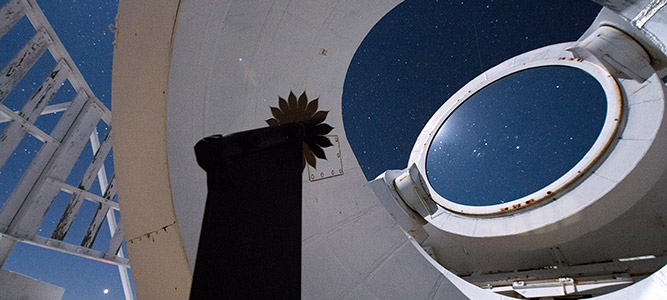Starshade
Key Tool in the Search for Earth-like Planets

Does life exist on other worlds?
Is our planet unique? Are we alone in the universe? Recent technological advances will allow us to start answering these questions within a decade.
The Starshade, in development by Northrop Grumman, is a mission using a screen shaped like a set of flower petals, that would fly thousands of miles in front of a space telescope and eclipse different stars as needed to study planetary systems around the closest stars. Thousands of exoplanets have been discovered, but they are generally quite close to their parent star, while planets resembling Earth, Venus, and Mars would have the best chance to be hospitable to life as we know it. In addition, most of the known exoplanets have been discovered by indirect means.
The next breakthrough will come with direct imaging and spectroscopy of a planet in the "habitable zone" around a nearby star, or a region near a star that is warm enough for liquid water to exist on the surface—something that Starshade is designed to do.
Starshade
The innovative Starshade concept uses a large screen, shaped like a daisy and taller than a 15-story building, to allow a companion space telescope to detect extrasolar planets around stars less than 50 light years from Earth.
The Problem
At a distance of 33 light years, a star like our Sun would outshine a planet in the habitable zone by a factor of 10 billion and would be separated by only 0.1 arcsecond (1/36,000th of a degree) away, making the planet impossible to view.
The Solution
The Starshade solves this by suppressing the light from a star by a factor of more than 1010, while leaving the telescope a clear line of sight to the planet. To do both these things at once, it must be placed tens of thousands of kilometers from a four-meter-class telescope.
Technology Development
The Starshade technology is one of the top candidates for a flagship-level mission in the next decade and a top Astro2010 priority for technology development. Northrop Grumman leads the mission and system design for Starshade and is developing the design, requirements, and error budget using detailed computer simulations.
Laboratory tests have been conducted with scale-model occulters to prove that the Starshade functions as expected. Component hardware has been built to determine the state of-the-art capability to produce the required structure.
Media Contact
William Furlong
(310) 814-8395